With prices on the higher end of the scale, the Q90T and the CX are far from budget-friendly buys for an average consumer. Of course, these two models come with several features that certainly justify their steep price points. That said, before you spend your money on either of these sets, make sure to read our thoroughly researched Samsung Q90T vs LG CX comparison page to be sure you’re picking the most suitable model for yourself.
Samsung Q90T vs LG CX – Quick Comparison
Samsung Q90T
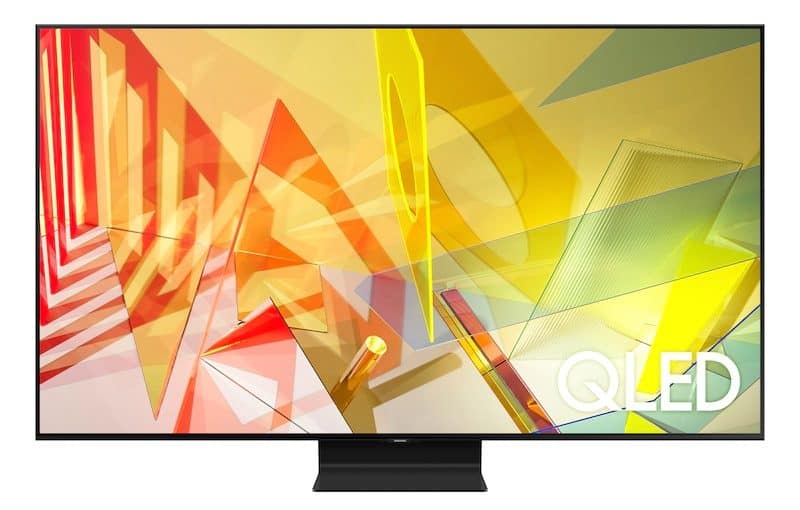
The Q90T is currently one of the top TVs in Samsung’s lineup, packed with plentiful features that makes it one of the best models on the market. Here are the Q90T’s most significant pros and cons:
Pros:
- Excellent Tizen smart platform
- VRR, FreeSync, and G-SYNC
- HDR10+
- Striking color volume
Cons:
- No Dolby Vision
- Mediocre viewing angles
LG CX
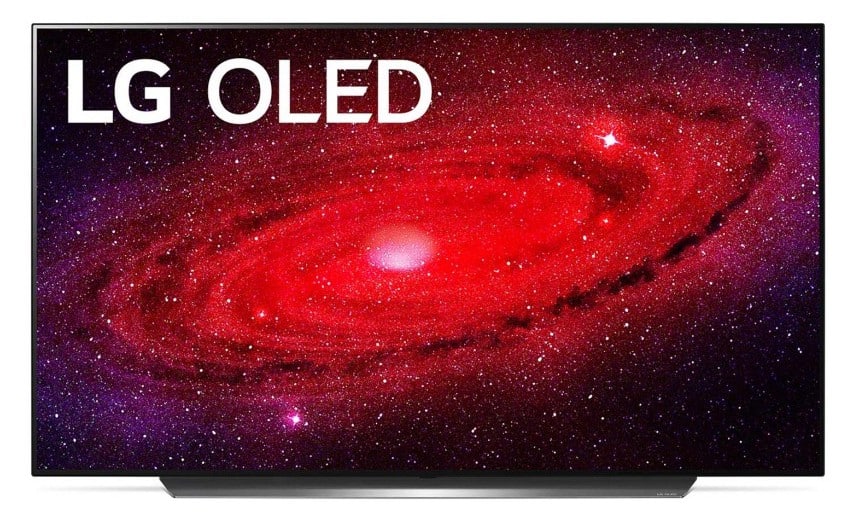
If you’re looking for a top-quality LG OLED TV that offers excellent value for money, the CX is an unbeatable choice. It excels at displaying movies, sports, video games and even works as an excellent PC monitor. Let’s take a glance at CX’s most prominent advantages and disadvantages:
Pros:
- Infinite contrast ratio
- VRR, FreeSync, and G-SYNC
- Great viewing angles
- Dolby Vision, HDR10, HLG
Cons:
- No HDR10+
- SDR and HDR brightness fail to impress
Features Face to Face
Panel Technology
The Q90T uses Samsung’s trademarked QLED (Quantum Dot Light-Emitting Diode) technology. QLED panels are similar to traditional LED VA panels in many ways but have some enhanced properties, particularly deeper black levels and an improved native contrast ratio.
The CX also features its manufacturer’s custom panel technology, in this case, LG’s OLED panel. This panel technology features a display made from organic compounds, primarily carbon. OLED panels can’t get as bright as other LED panels but offer great viewing angles and the best contrast ratio of any type of LED panel.
Image Processor
The Q90T employs the 4K Quantum Processor that comes with all higher-end Samsung Smart TVs. This processor uses AI technology to improve and upscale content instantly.
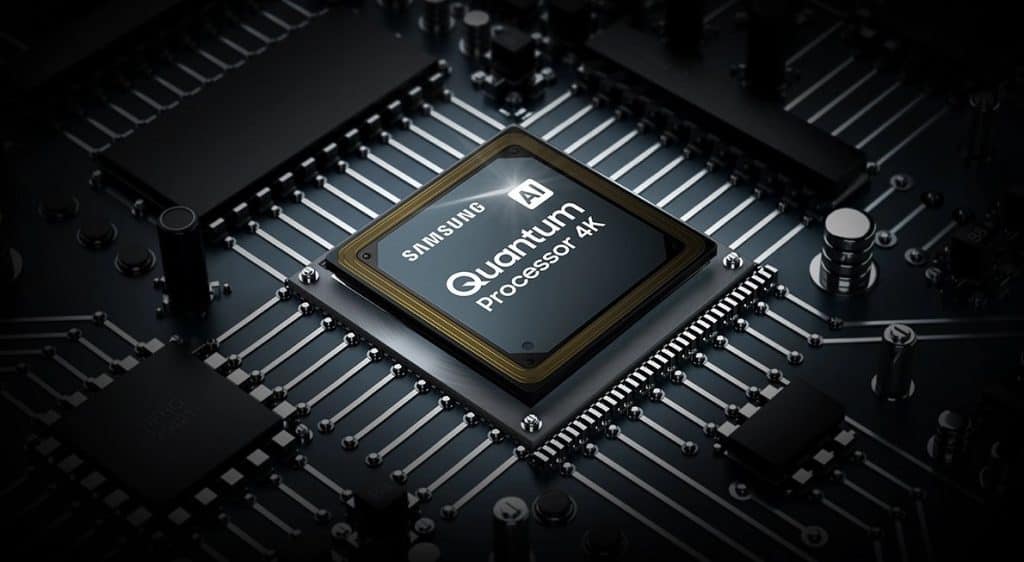
The CX uses the Advanced α9 AI processor for all of its image processing tasks. Like Samsung’s processor, this one also has extensive image optimizing properties and is very adept at recognizing content, removing noise, and improving overall picture quality.
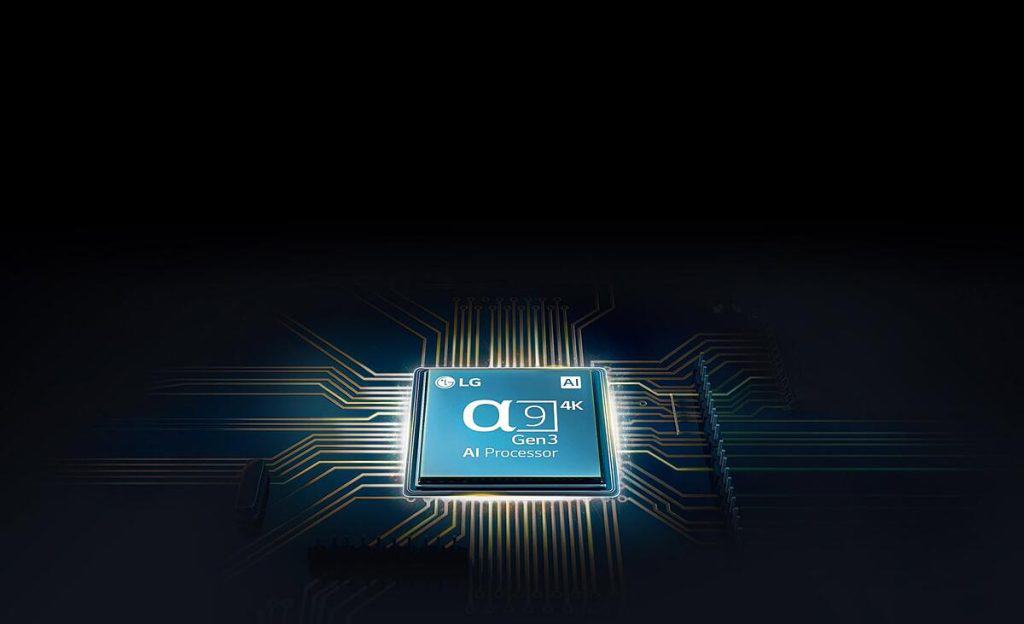
Motion Technology
The Q90T has an impressive response time of 10.6 milliseconds, well below the 14-millisecond threshold separating TVs with quality motion technology from those with an average one. This TV displays minimal blur in fast-moving scenes, though you might notice some overshoot during image transitions.
While the Q90T comes with terrific motion technology, the LG CX utterly outperforms the Q90T in this category. This is because it offers a near-instantaneous response time which the Q90T simply can’t match. It can fully transition from one color to another in just 1.7 milliseconds.
Picture Quality
Picture quality is undoubtedly the key determinant that makes a top-quality TV, particularly when discussing the resolutions that the TV supports. And, in the context of supported resolutions, these two models come with nearly identical characteristics. Here’s a complete rundown of all of the Q90T and LG CX supported resolutions:
| Resolution | Samsung Q90T | LG CX |
|---|---|---|
| 4K/120Hz | Yes (Native Support) | Yes (Native Support) |
| 4K/60Hz/4:4:4 | Yes | Yes |
| 4K/60Hz | Yes | Yes |
| 1440p/120Hz | Yes (Native Support) | Yes (Native Support) |
| 1440p/60Hz | Yes (Native Support) | Yes (Force Resolution) |
| 1080p/120Hz | Yes (Native Support) | Yes (Native Support) |
| 1080p/60Hz/4:4:4 | Yes | Yes |
Contrast Ratio / Black Level
The LG CX outdoes the Q90T in this category and delivers a noticeably better native contrast ratio. This is because it has a near-infinite contrast ratio, like all LG OLED TVs. As the LG CX can turn off individual pixels, it can produce perfect blacks in every situation.
Still, the Q90T has an impressive native contrast ratio which can be enhanced through its local dimming option. This allows it to produce deep blacks like most LED VA panels.
Local Dimming
The Q90T uses the preferred full-array backlight configuration with local dimming, making it a great performer in this category. Additionally, Samsung’s new algorithm on this model allows it to activate more zones around bright objects. This makes blooming less intense and subtitles during dark scenes easier on the eyes.
That said, this is another category in which the CX outperforms the Q90T. Since the CX can dim pixels individually, it can display bright objects perfectly, without any blooming or grayish areas on the display.
Peak Brightness
The Q90T has outstanding SDR and HDR brightness. It can get bright enough to deliver an excellent viewing experience, especially in HDR. In comparison, the LG CX has decent SDR and HDR peak brightness. It’s still brighter than most OLED panels but not bright enough to compare with the Q90T. To put this into numbers, here’s a direct peak brightness comparison table of the Samsung Q90T vs LG CX:
| Brightness Values | Samsung Q90T | LG CX |
|---|---|---|
| Peak 10% Window SDR Brightness | ∼ 1300 nits | ∼ 450 nits |
| Peak 100% Window SDR Brightness | ∼ 530 nits | ∼ 175 nits |
| Peak 10% Window HDR Brightness | ∼ 1450 nits | ∼ 815 nits |
| Peak 100% Window HDR Brightness | ∼ 630 nits | ∼ 150 nits |
Color
The LG CX delivers an impressive color gamut and is better than the Q90T in this category. It has slightly better coverage of the Rec. 2020 color space. Moreover, the CX has significantly better coverage of the commonly-used DCI P3 color space since it offers near-perfect performance in this category.
In contrast, the Q90T comes with a better color volume, as it has all-around better coverage across the color spectrum. However, both models are marked with the same strengths and weaknesses when it comes to color volume. They can display dark and saturated colors but struggle to show very bright ones.
Viewing Angle
The LG CX provides considerably better viewing angles than the Samsung Q90T. The CX maintains a sharp and accurate image with above-average viewing angles even when you’re watching content from the side. In comparison, The Q90T offers decent viewing angles. This TV can support a slightly wider seating area but is unsuitable for large rooms with a wide seating arrangement.
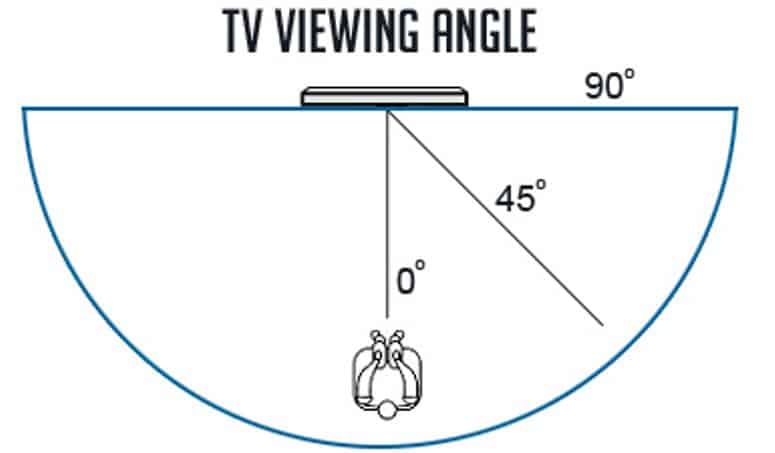
Reflections / Anti-Glare
Both models come with a glossy screen finish, which provides outstanding reflection handling and excellently handles ambient light. More precisely, these two TVs reflect just around 1.5% of all light that hits their screens. Even more impressively, the Q90T and the CX reflect approximately 0.8% and 0.4% of indirect light, respectively.
Sound Quality
The CX delivers better sound quality than the Q90T, as its speakers have a good and well-balanced frequency response. It can get pretty loud and has noticeably better bass than most TVs on the market.
In contrast, the Q90T is worse across the board in almost every essential audio parameter. It has a mediocre frequency response and shows quite a bit of compression when you’re listening close to max volume.
Smart TV Platform (Operating System)
Both TVs employ their manufacturer’s proprietary Smart TV operating systems to power their smart platforms. The Q90T’s Tizen OS and the CX’s WebOS platform are generally straightforward to use and come with a great app variety. Here’s a more detailed comparison of their features:
| OS Features | Samsung Q90T | LG CX |
|---|---|---|
| OS Version | Tizen OS (2020 Version) | WebOS (5.0 Version) |
| Time to Change Backlight | 6 seconds | 7 seconds |
| Time to Load YouTube | 2 seconds | 2 seconds |
| HDR Netflix/Youtube | Yes | Yes |
| App Selection/Variety | 9/10 | 9/10 |
| App Smoothness | 9/10 | 7/10 |
| Ease of Use | 7/10 | 9/10 |
Connectivity
Many users unfairly overlook connectivity properties or at least don’t look into them with great attention. However, connectivity features like inputs, voice assistants, and wireless technologies can significantly impact the overall user experience, which is why we want to highlight and compare each of these categories in detail.
Inputs
The Q90T and the CX have noticeably different input layouts and slightly different input specifications. Equally as important, both models have exceptionally low input lag, although the Q90T is a better performer when it comes to this. For a more precise comparison of their input specifications, check out the table below:
| Input Ports | Samsung Q90T | LG CX |
|---|---|---|
| HDMI Ports | 4 HDMI 2.0 Ports | 4 HDMI 2.0 Ports |
| USB Ports | 2 USB 2.0 Ports | 3 USB 2.0 Ports |
| Digital Optical Audio Out | 1 Port | 1 Port |
| Ethernet Port | Yes | Yes |
Voice Assistants
Both models come with intuitive smart remotes that have built-in microphones for voice assistant device control. In Q90T’s case, this is available through Samsung’s Bixby voice assistant.
On the other hand, the CX uses LG’s ThinkQ voice control and AI technology. That said, both TVs allow you to set up Google Assistant or Amazon Alexa. The two voice assistants are equally capable, as both enable you to tailor TV settings, search for content, or open up apps.
Wireless Technologies
Although the Q90T and the CX are very different models in many regards, they support the same wireless technologies. This includes industry-accepted Wi-Fi (2.4 GHz, 5 GHz) and Bluetooth (4.2 version). The latter is particularly important to take note of if you’re planning on pairing up a mouse, keyboard, or stereo audio with your TV.
Standout Features
These two models are stacked to the top with superb features, so it’s hard to find any features present in one TV and not in the other. That said, the Q90T’s most notable standout feature is the presence of HDR10+. Conversely, the CX supports the Dolby Vision content format.
Furthermore, the Q90T and the CX share some standout features that set them apart from many other TVs on the market. More specifically, this includes VRR (variable refresh rate) and convenient gaming features like FreeSync and G-SYNC.
Conclusion
After matching the two models in great detail in this Samsung Q90T vs LG CX comparison, we’d say that the latter model is the better option for most uses. Its ability to switch off individual pixels enables it to deliver a near-infinite contrast ratio and impeccable local dimming properties. It also has better motion handling, viewing angles, and sound quality.
That said, the Q90T’s QLED panel is all but guaranteed to last longer, as it doesn’t run the risk of burn-in or permanent image retention. Additionally, this model comes with lower input lag and can get considerably brighter than the LG CX.